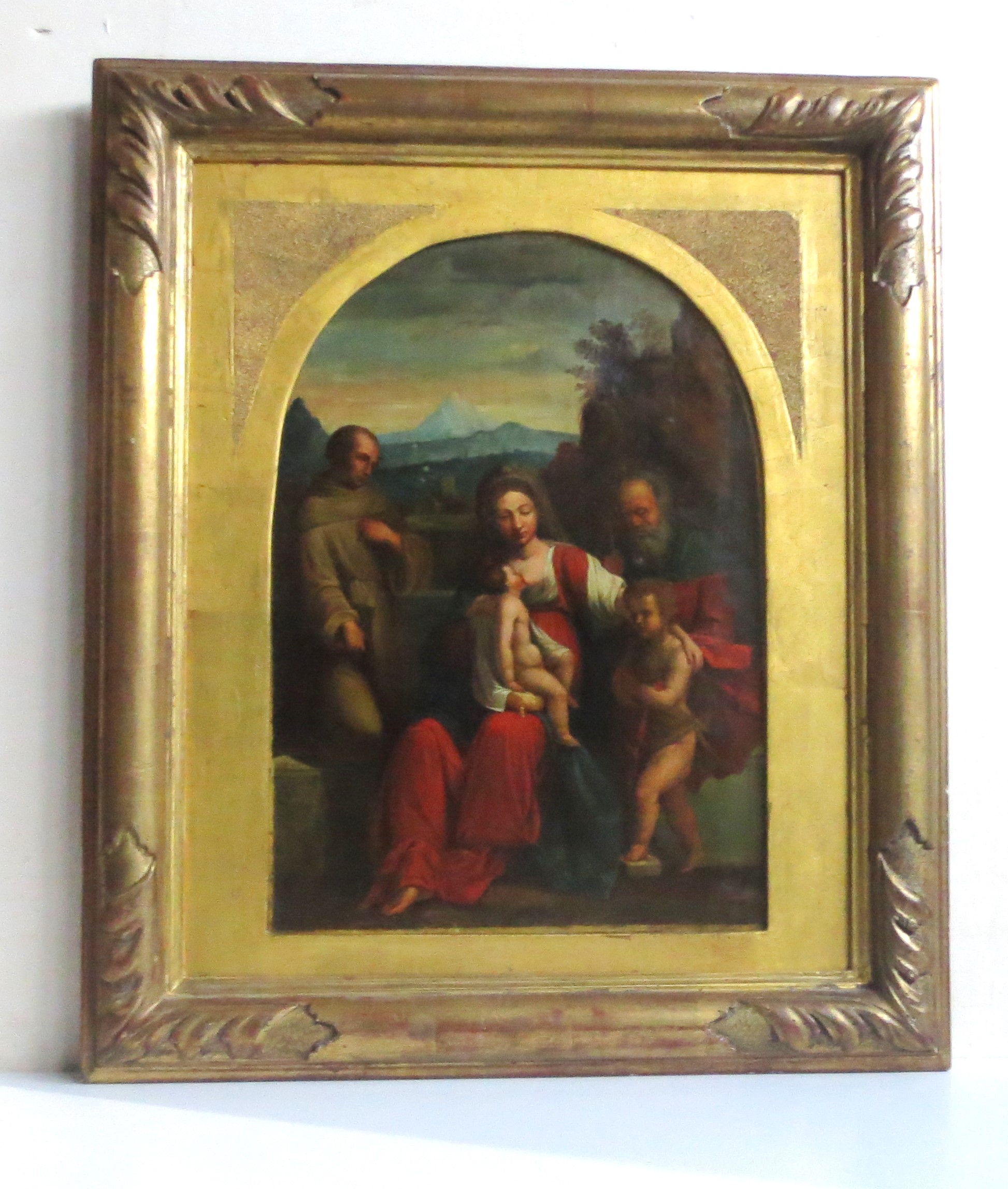A particularly good recently recognized example of the smaller Holy Family and Sacre Conversazione images painted by Scarsellino largely during the last decade of the sixteenth century. Most of Scarsellino’s paintings, as with most painting in Ferrarra and its kindred north Italian city states prior to the Papal assault along the Po trajectory between Milan and Venice, were party to a relatively conservative continuity from the older natural realism of Giorgione and Titian through the apogee of Tintoretto and Veronese, before a terminal return to earlier traits of mannerism.
Several other similar paintings by Scarsellino from the last decade on the cusp of the new century are conveniently illustrated with full critical apparatus in the excellent monograph on the artist by Mari Angela Novelli, Scarsellino, Milan, 2008,cat. nos.: 77, 78, 117, 118, 121, 122, 179. Inter alia, these select paintings share several traits as constants without obvious literal repetition: the decorous decorative decorum, pleasant natural body and facial types appropriate to age and cast. In particular, while older saints are grave contemplative, and younger children alert but contained, within empathetic response, Scarsellino’s portrayal of the Virgin is attractively thoughtful, her heavily lidded, downcast eyes conveying in her handsome features the affect of introspective meditation. His children are consistently well-drawn with a slight tendency to an elongated torso.

